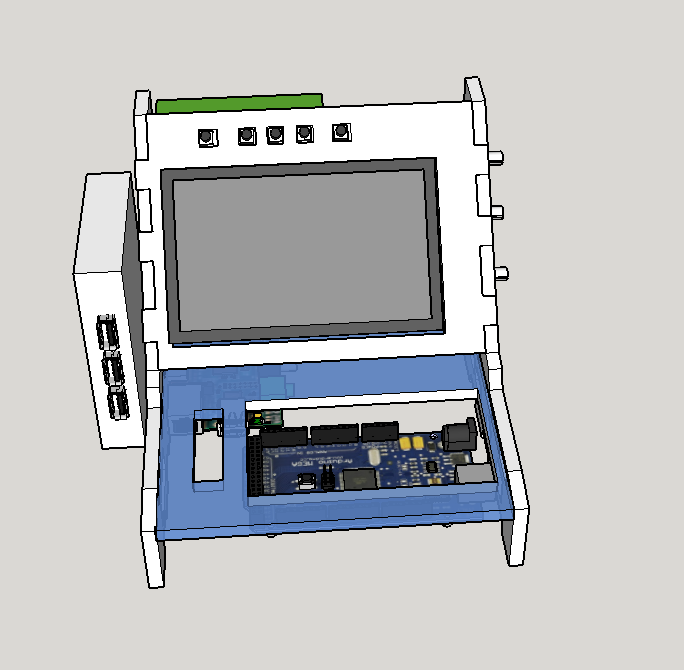Raspberry Pi
- Raspbian based
- 5" HDMI Screen for use of Desktop when programming/display serial monitor etc
- GPIO pins to be broken out in development area.
- To be connected to the Arduino by USB for programming and serial communication
- Wifi Dongle for Internet connection and VNC serving to other devices when necessary.
Arduino
- Either an Uno (for ease of shield use) or a Nano (with a screw terminal breakout)
- UPDATE - I found my old Mega!
- Connected to Pi for serial comms & programming
- Additional 3.3v/5v power rails to be available for connection of further devices.
- Additional Bluetooth module for communication.
Breadboard
- Standard breadboard
- 3.3v/5v power rails for prototyping.
Screen
- 5", non-touch (for now)
- Driver board to be embedded in device
Power
- 5v for Pi, Arduino, breadboard power supply.
- Screen is recommended 12v, but can run on 5.
- Potential battery power, but not necessary
 Craig Hissett
Craig Hissett











 Sergey
Sergey
I'm not sure what file format your laser needs, but it's possible that you could use Inkscape for the same thing.
Here's an instructable that includes a program to help:
http://m.instructables.com/id/SketchUp-Inkscape-and-Ponoko-Laser-Cutting/